
THE ROMAN ORATOR AND rhetorician Eumenius delivered a speech to the Roman governor of Gallia Lugdunensis in a.d. 298 advocating for the restoration of the famous schools called the Maeniana in the city of Augustodunum, at the center of the province. At the time of Eumenius’ speech, the once-thriving city had fallen on hard times. In a.d. 269, its residents had taken sides against Victorinus, the emperor of the ill-fated breakaway state now known as the Gallic Empire (ca. 269–271 a.d.), and the city was besieged for seven months. Access to the high level of culture and education that had been central to Augustodunum’s identity fell victim to a combination of circumstances, perhaps including damage to the Maeniana, funding diverted to the conflict, or a diminished student population.
Augustodunum (modern Autun) had been founded around 13 b.c. by the emperor Augustus (r. 27 b.c.–a.d. 14) as a new capital for the Aedui, a Celtic tribe that was—mostly—allied with the Romans. By 121 b.c., the tribe had been awarded the title of “brothers and kinsmen of Rome.” The Aedui largely supported Julius Caesar in his campaigns in Gaul, with the exception of a brief defection in 52 b.c. when they joined an unsuccessful rebellion led by Vercingetorix, the doomed chief of the Arverni tribe. The capital of the Aedui had been located at the settlement of Bibracte, but when the tribe became a civitas foederata, or allied community, of Rome, it was moved 15 miles east to its new location. It was given a name that combined its Roman and Gallic identities: Augusto- for Augustus, and -dunum, the Celtic word for “hill,” “fort,” or “walled town.”
This story is from the November/December 2021 edition of Archaeology.
Start your 7-day Magzter GOLD free trial to access thousands of curated premium stories, and 8,500+ magazines and newspapers.
Already a subscriber ? Sign In
This story is from the November/December 2021 edition of Archaeology.
Start your 7-day Magzter GOLD free trial to access thousands of curated premium stories, and 8,500+ magazines and newspapers.
Already a subscriber? Sign In
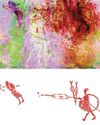
A Very Close Encounter
New research has shown that human figures painted in red on a rock art panel in central Montana depict individuals engaged in a life-or-death encounter during an especially fraught historical moment.
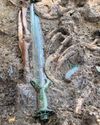
A Sword for the Ages
A zigzag pattern, now tinged with the green-blue patina of oxidized metal, adorns the octagonal hilt of a rare sword dating to the Middle Bronze Age in Germany (1600-1200 B.C.) that was recently excavated in the Bavarian town of Nördlingen.
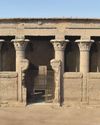
Ancient Egyptian Astrology
For centuries, layers of soot have coated the ceilings and columns in the entrance hall of Egypt's Temple of Esna. Now, an Egyptian-German team of researchers, led by Hisham El-Leithy of the Egyptian Ministry of Tourism and Antiquities and Christian Leitz of the University of Tübingen, is restoring the temple's vibrant painted reliefs to their original brilliance.
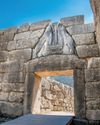
BRONZE AGE POWER PLAYERS
How Hittite kings forged diplomatic ties with a shadowy Greek city-state
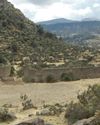
RITES OF REBELLION
Archaeologists unearth evidence of a 500-year-old resistance movement high in the Andes

Secrets of Egypt's Golden Boy
CT scans offer researchers a virtual look deep inside a mummy's coffin

When Lions Were King
Across the ancient world, people adopted the big cats as sacred symbols of power and protection

UKRAINE'S LOST CAPITAL
In 1708, Peter the Great destroyed Baturyn, a bastion of Cossack independence and culture

LAPAKAHI VILLAGE, HAWAII
Standing beside a cove on the northwest coast of the island of Hawaii, the fishing village of Lapakahi, which is surrounded by black lava stone walls, was once home to generations of fishers and farmers known throughout the archipelago for their mastery of la'au lapa'au, or the practice of traditional Hawaiian medicine. \"

A MORE COMFORTABLE RIDE
Although the date is much debated, most scholars believe people 5,000 years ago. For thousands of years after that, they did so without saddles. \"In comparison with horse riding, the development of saddles began relatively late, when riders began to care more about comfort and safety in addition to the horse's health,\" says University of Zurich archaeologist Patrick Wertmann.